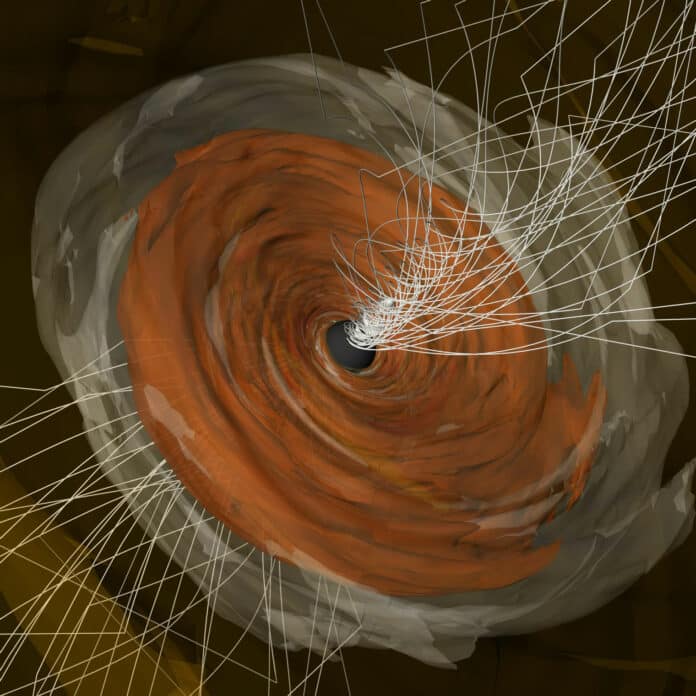The supermassive black hole in the heart of the M87 galaxy has a bright ring of radiation surrounding it, as shown by Event Horizon Telescope (EHT) studies. A coherent spiral pattern surrounding the black hole has also been discovered using EHT images in linear polarization. This pattern results from organized magnetic fields passing through the producing plasma.
The Event Horizon Telescope (EHT) collaboration – has just released new findings that provide insights into the supermassive black hole M87*. The research describes how light from the edge of the black hole spirals as it escapes the intense gravity of the black hole, known as circular polarization.
Until now, the magnetic field and high-energy particles surrounding the black hole have been unknown. This spiral movement of light provides information about them. The results support previous EHT discoveries that the magnetic field surrounding the M87* black hole is strong enough to prevent the black hole from consuming surrounding matter periodically.
Thanks to ALMA, a key instrument for the EHT, for its ability to see low-frequency radio waves from the spiraling light at the heart of this research.
Scientists also produced circular polarization images using traditional and newly developed methods. All methods find a moderate level of resolved circular polarization across the image, consistent with the low image-integrated circular polarization fraction measured by the ALMA.
Andrew Chael, an associate research scholar at the Gravity Initiative at Princeton University, who coordinated the project, said, “Circular polarization is the final signal we looked for in the EHT’s first observations of the M87 black hole, and it was the hardest to analyze. These new results give us confidence that our picture of a strong magnetic field permeating the hot gas surrounding the black hole is the right one. The unprecedented EHT observations allow us to answer long-standing questions about how black holes consume matter and launch jets outside their host galaxies.”
Hugo Messias, who leads the VLBI team at ALMA, said, “The magnetic fields we’re witnessing with M87*’s circular polarization strengthen the results from linear polarization published in 2021 but still leave room for improvement. This circularly polarized light that has now been detected is very faint. Still, in more recent years, EHT has been observing with more stations and improved sensitivity, meaning that the ongoing analysis will likely provide us with new tips on the secrets around M87*.”
Journal Reference:
- The Event Horizon Telescope Collaboration et al. First M87 Event Horizon Telescope Results. IX. Detection of Near-horizon Circular Polarization. The Astrophysical Journal Letters. DOI 10.3847/2041-8213/acff70
